Wolfram Function Repository
Instant-use add-on functions for the Wolfram Language
Function Repository Resource:
Find the area between two plane curves
ResourceFunction["AreaBetweenCurves"][{f,g},{x,xmin,xmax}] finds the area of the enclosed region between the functions f(x) and g(x) over the interval xmin < x < xmax. |
| Assumptions | $Assumptions | assumptions on parameters |
Find the area between two curves:
| In[1]:= |
| Out[1]= |
| In[2]:= |
| Out[2]= | 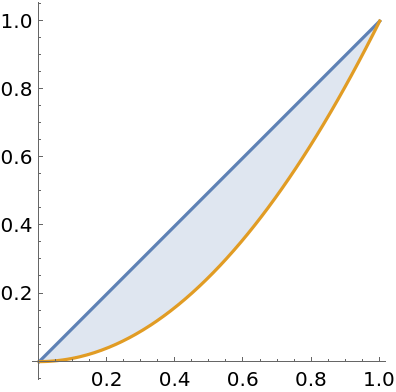 |
Find the area of the region enclosed by two curves:
| In[3]:= |
| Out[3]= |
| In[4]:= |
| Out[4]= | 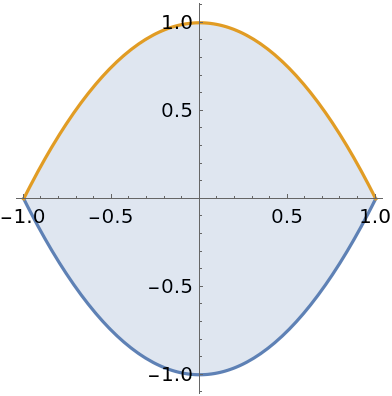 |
Where the curves do not meet:
| In[5]:= |
| Out[5]= |
| In[6]:= |
| Out[6]= | 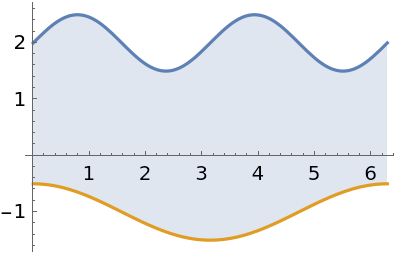 |
With multiple enclosed regions:
| In[7]:= |
| Out[7]= |
| In[8]:= |
| Out[8]= | 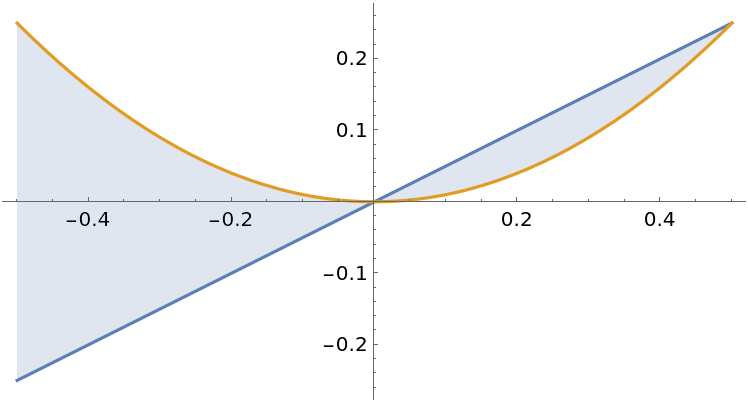 |
Between curves containing parameters:
| In[9]:= |
| Out[9]= |  |
Find the area over an unbounded interval:
| In[10]:= |
| Out[10]= |
| In[11]:= |
| Out[11]= | 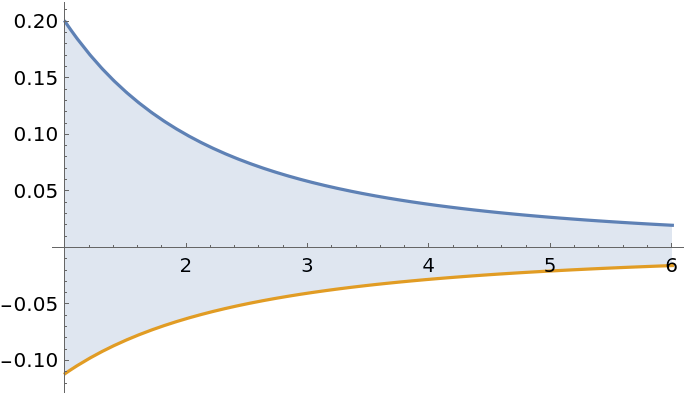 |
Curves with discontinuities over intervals:
| In[12]:= |
| Out[12]= |
| In[13]:= |
| Out[13]= | 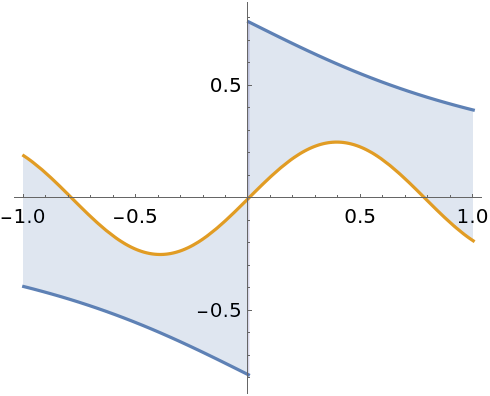 |
With singularities:
| In[14]:= |
| Out[14]= |
| In[15]:= |
| Out[15]= | 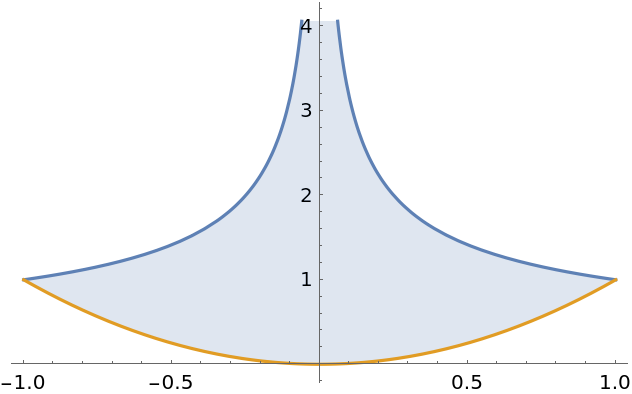 |
The result may be conditioned on parameters:
| In[16]:= |
| Out[16]= |  |
Make an assumption about the parameter:
| In[17]:= |
| Out[17]= |
Compute the area of a disk:
| In[18]:= |
| Out[18]= |
| In[19]:= |
| Out[19]= | 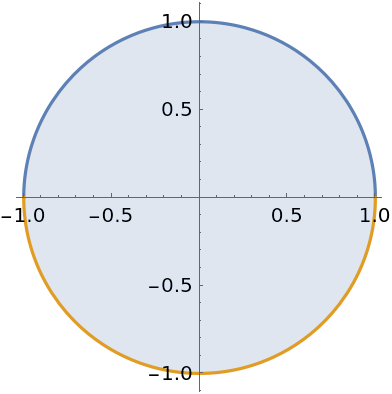 |
Cavalieri's principle states that the area between two curves does not change when each curve is shifted by the same amount:
| In[20]:= |
| In[21]:= |
| In[22]:= |
| Out[22]= |
| In[23]:= |
| Out[23]= |
| In[24]:= |
| Out[24]= |  |
The population of a region is currently growing at a rate of 35.208 ⅇ0.0083 t hundred people per year. It is thought that a large spike in employment opportunities can drop the growth rate to 24.098 ⅇ0.0071 t hundred people per year over the next five years. Find how many fewer people will be born if such a spike occurs:
| In[25]:= |
| Out[25]= |
Area is always non-negative:
| In[26]:= |
| Out[26]= |
The order in which the curves are specified does not matter:
| In[27]:= |
| Out[27]= |
Find the area of multiple enclosed regions:
| In[28]:= |
| Out[28]= |
Sum over each enclosed region instead:
| In[29]:= | ![ResourceFunction[
"AreaBetweenCurves"][{Sin[x], Cos[x]}, {x, \[Pi]/4, 3 \[Pi]/4}] + ResourceFunction[
"AreaBetweenCurves"][{Sin[x], Cos[x]}, {x, 3 \[Pi]/4, 5 \[Pi]/4}]](https://www.wolframcloud.com/obj/resourcesystem/images/abc/abc37cb4-4b69-4bcd-94ba-ec92af70b0da/54d355184bb7d2e3.png) |
| Out[29]= |
| In[30]:= |
| Out[30]= |  |
The area between two curves is the integral of the absolute value of their difference:
| In[31]:= |
| Out[31]= |
| In[32]:= |
| Out[32]= |
The integral defining the area between two curves may not converge:
| In[33]:= | ![funcs = {x^2, 1/x^2};
range = {x, -1, 1};
Plot[funcs, range]](https://www.wolframcloud.com/obj/resourcesystem/images/abc/abc37cb4-4b69-4bcd-94ba-ec92af70b0da/688e37cad90bfe1c.png) |
| Out[34]= | 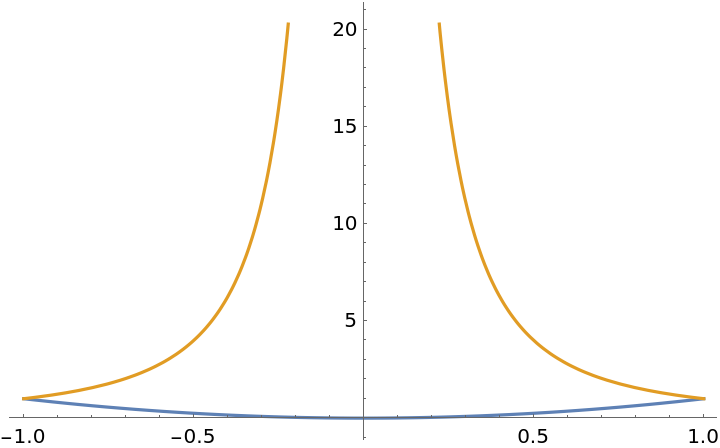 |
In such cases, AreaBetweenCurves throws a message:
| In[35]:= |
| Out[35]= |
Functions must be real-valued over the entire range of integration. Here ![]() is imaginary for x>1:
is imaginary for x>1:
| In[36]:= | ![funcs = {Sqrt[1 - x^2], 1 - x};
range = {x, 0, 2};
Plot[funcs, range, AspectRatio -> Automatic, Filling -> {1 -> {2}}]](https://www.wolframcloud.com/obj/resourcesystem/images/abc/abc37cb4-4b69-4bcd-94ba-ec92af70b0da/768709a20624d225.png) |
| Out[37]= | 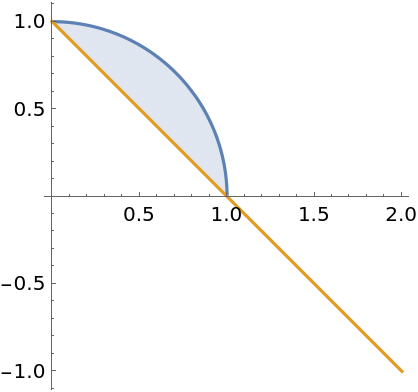 |
AreaBetweenCurves throws a message to warn the user:
| In[38]:= |
| Out[38]= |
Restricting the domain of integration yields a result:
| In[39]:= |
| Out[39]= |
This work is licensed under a Creative Commons Attribution 4.0 International License